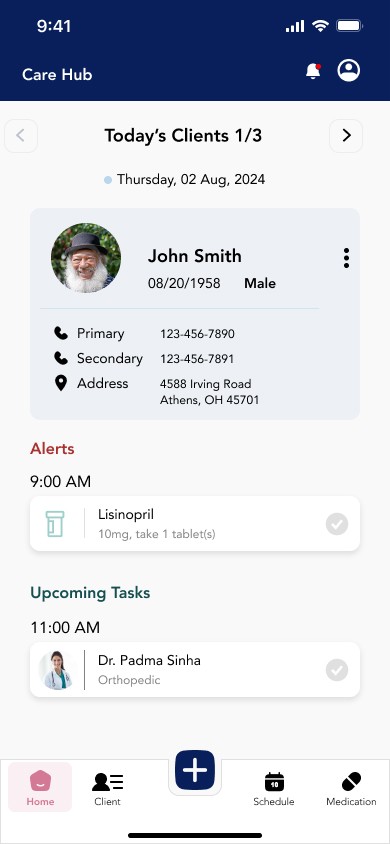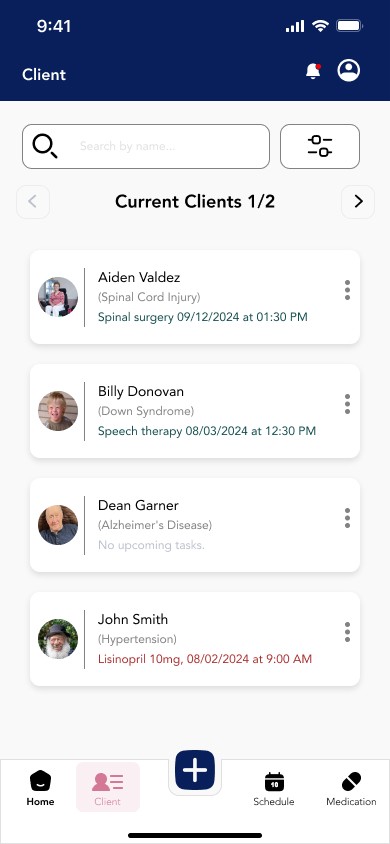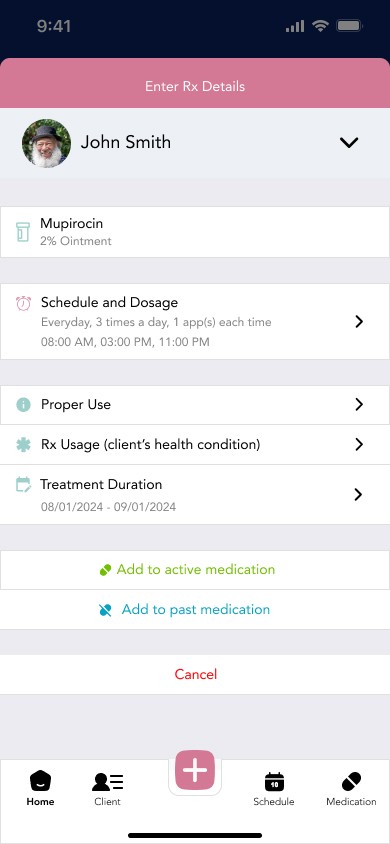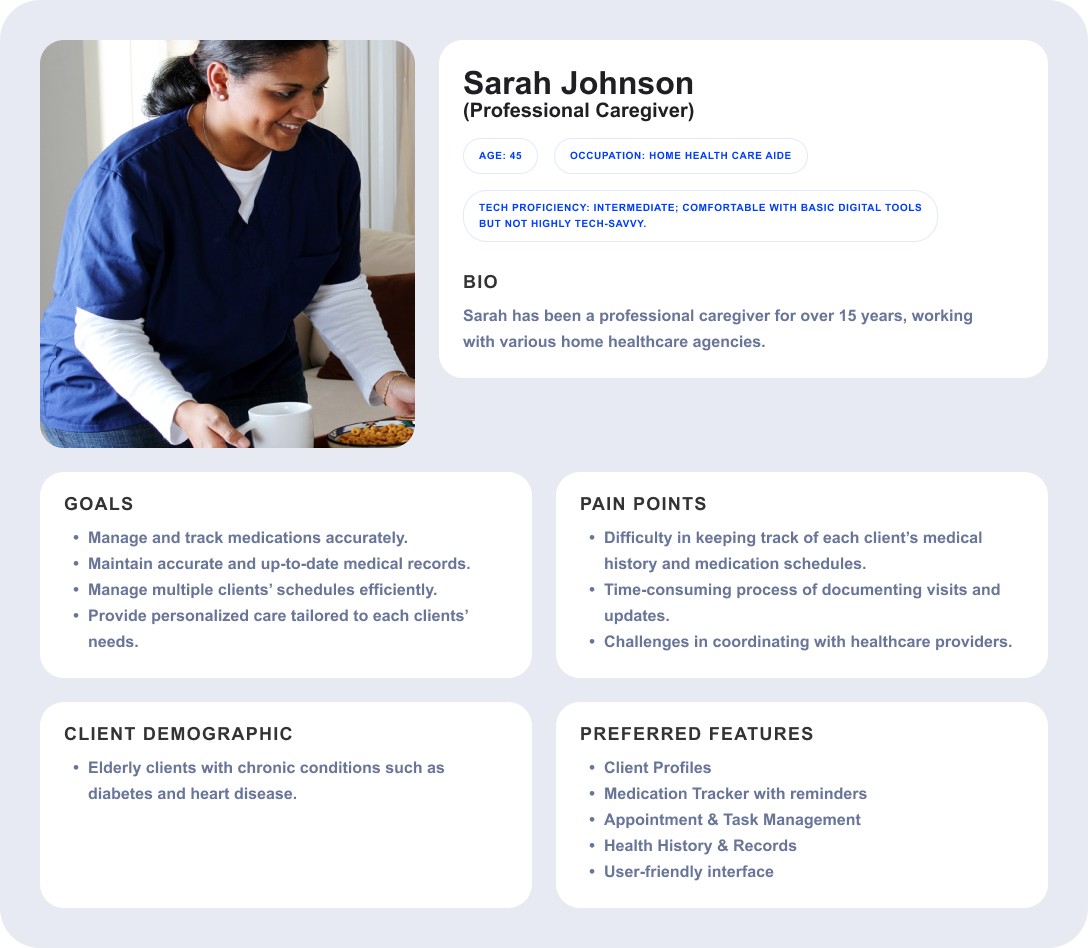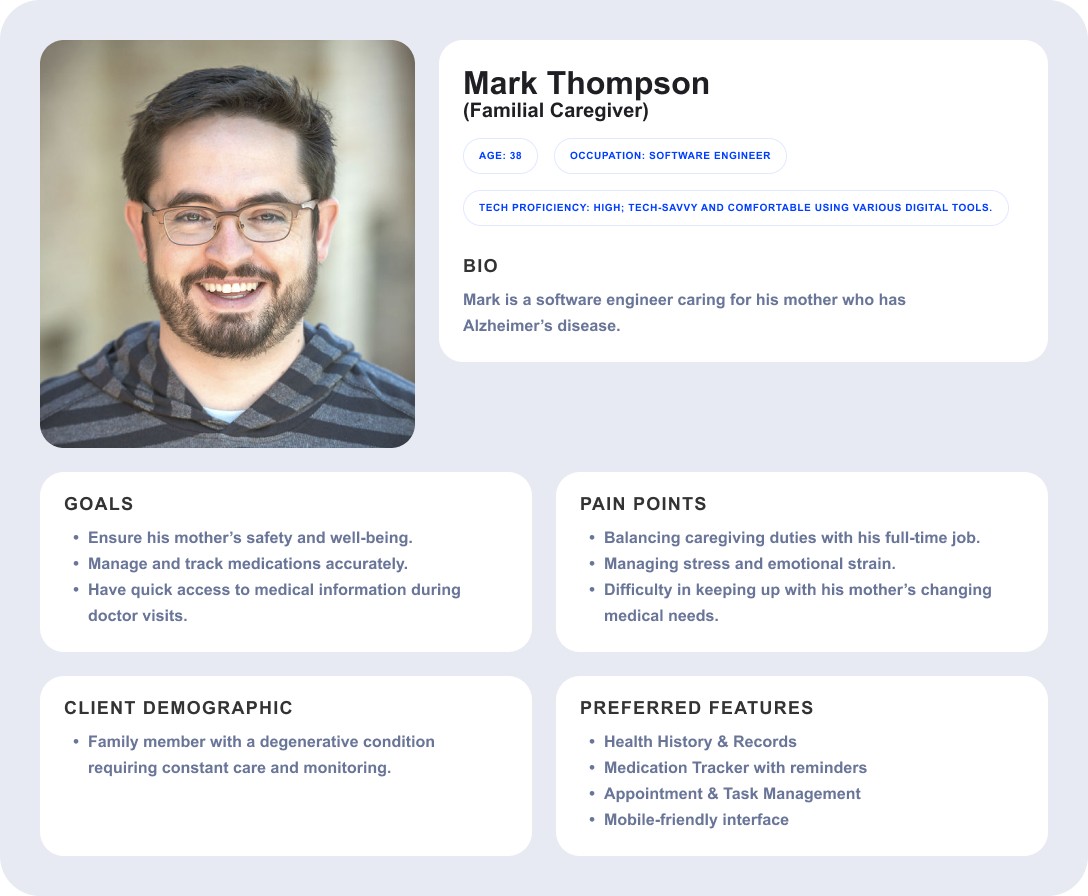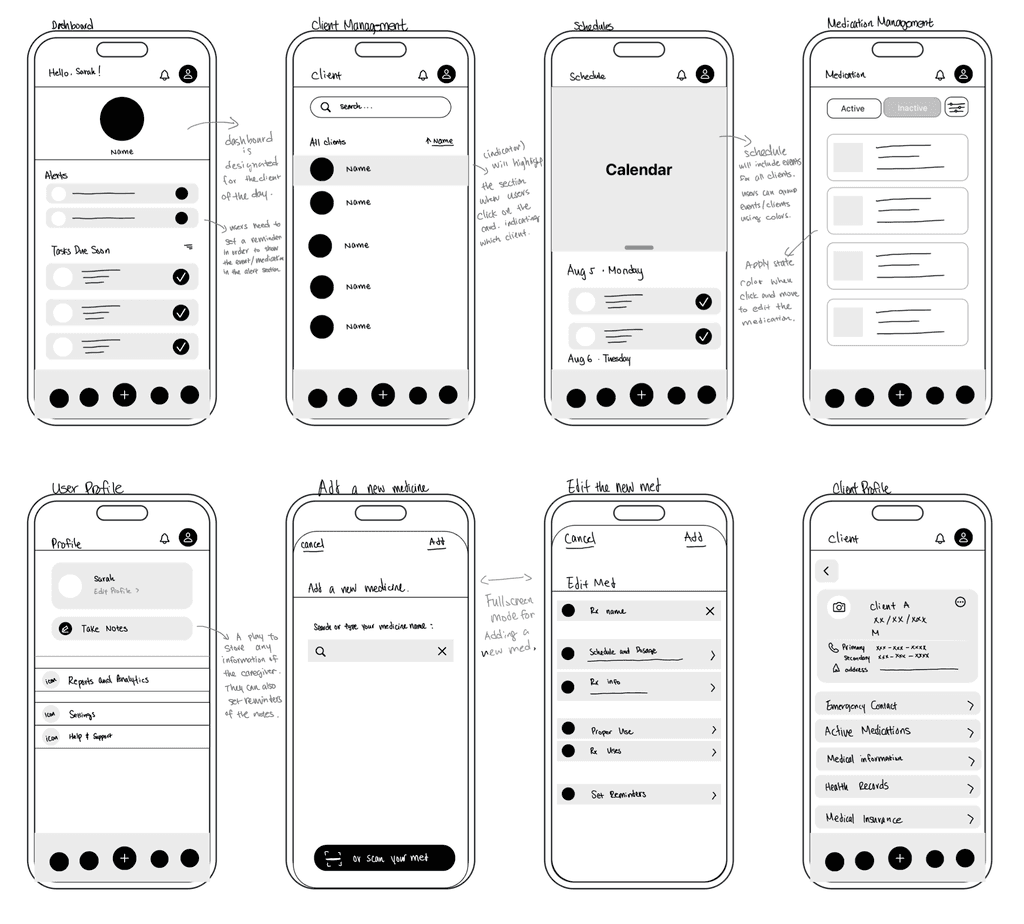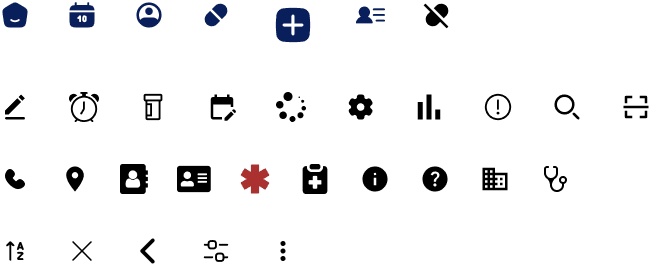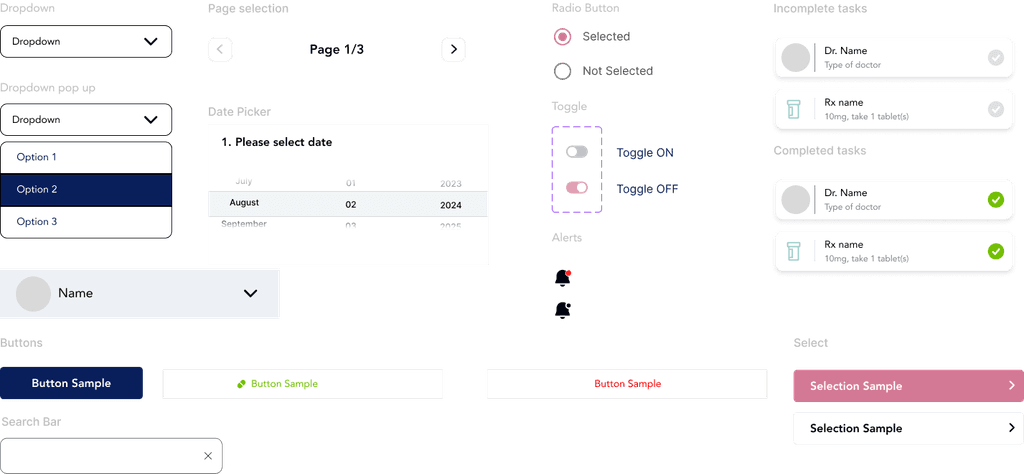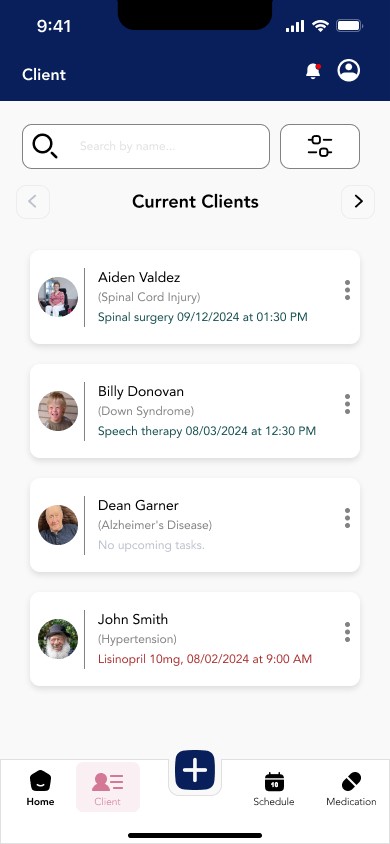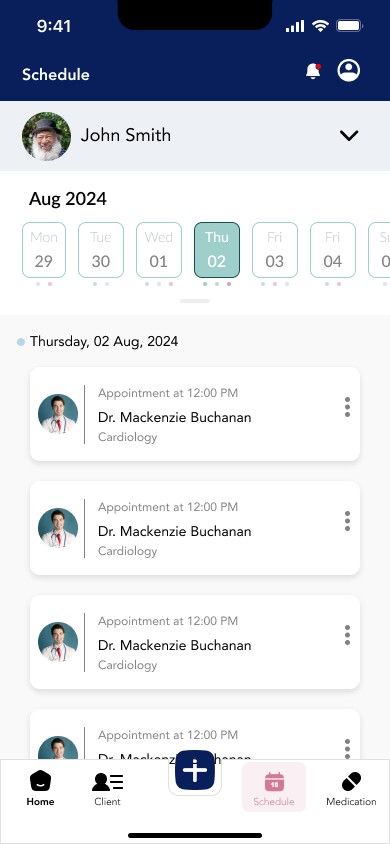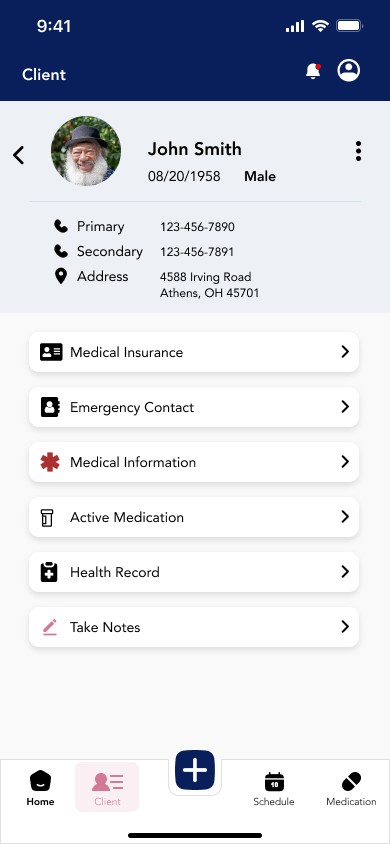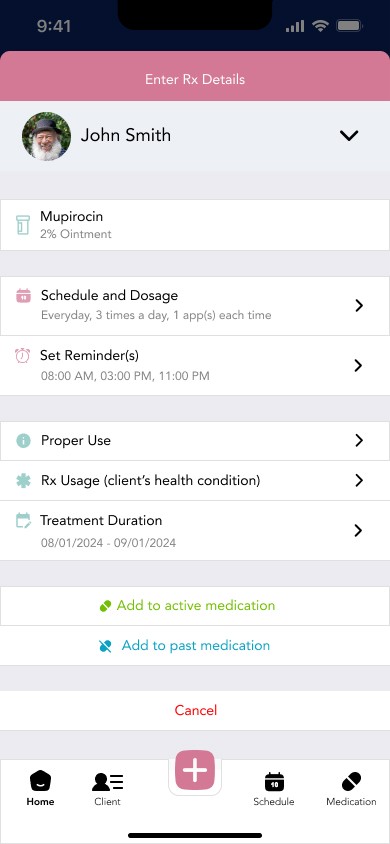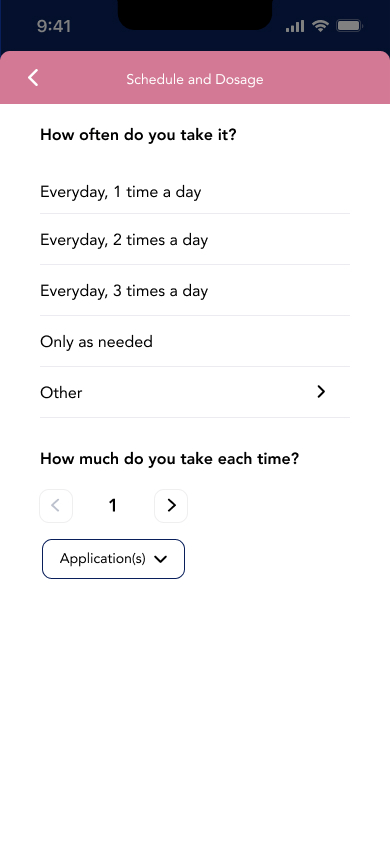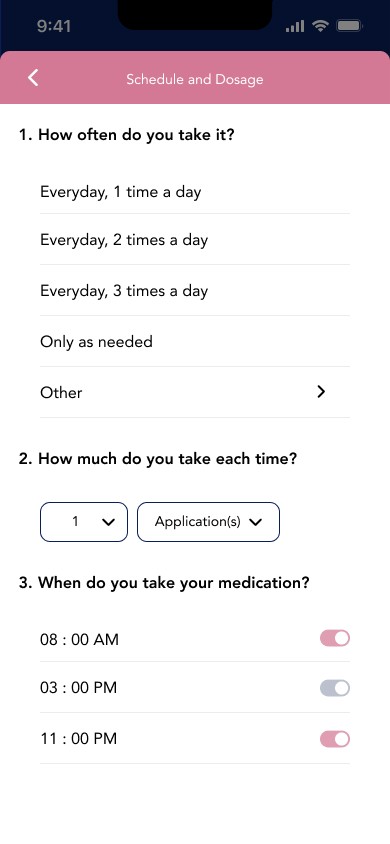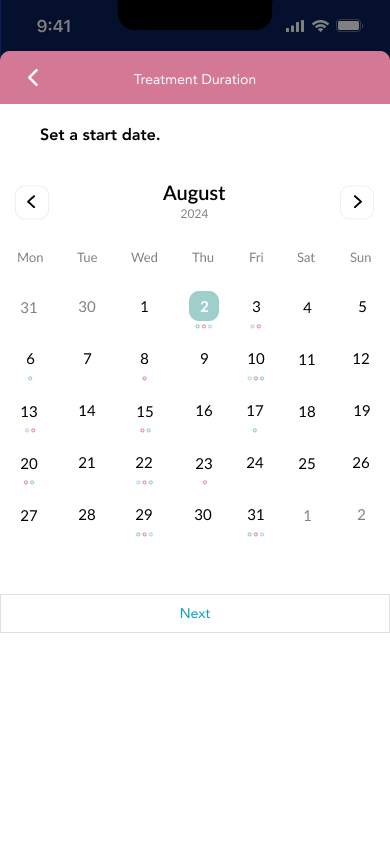Care hub
Caregivers' Centralized Client Management Tool.
ROLE
UX/UI Designer
tool
Figma
YEAR
2024
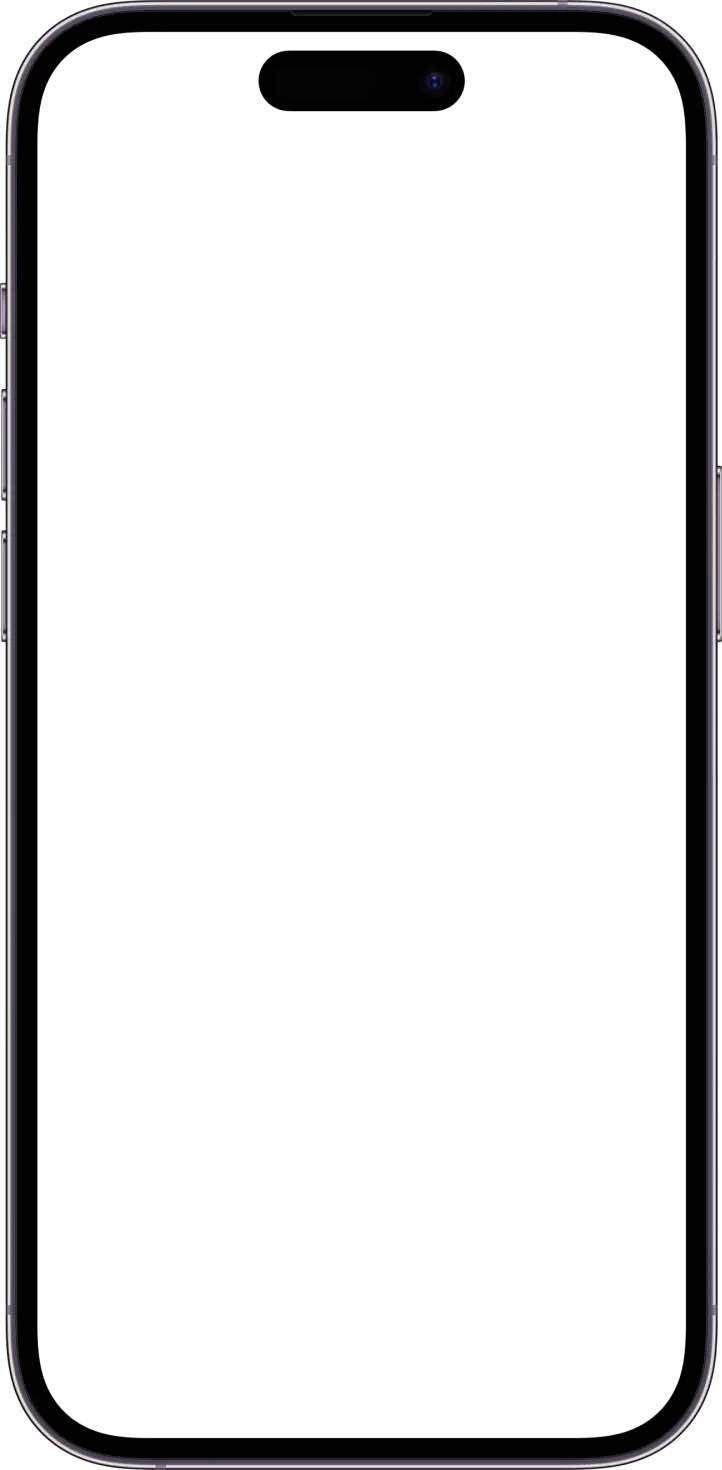
Are you a caregiver facing challenges managing your clients' complex medical histories and ongoing health concerns that require careful tracking and management?
Care Hub is designed to help people like you! 🎉
Project Overview
Care Hub is a user-friendly and comprehensive caregiver management tool that enables caregivers to manage their clients' medical information, track medication schedules, manage doctor appointments, and document health histories.
Timeline
From research to final prototype in 4 weeks.
Background
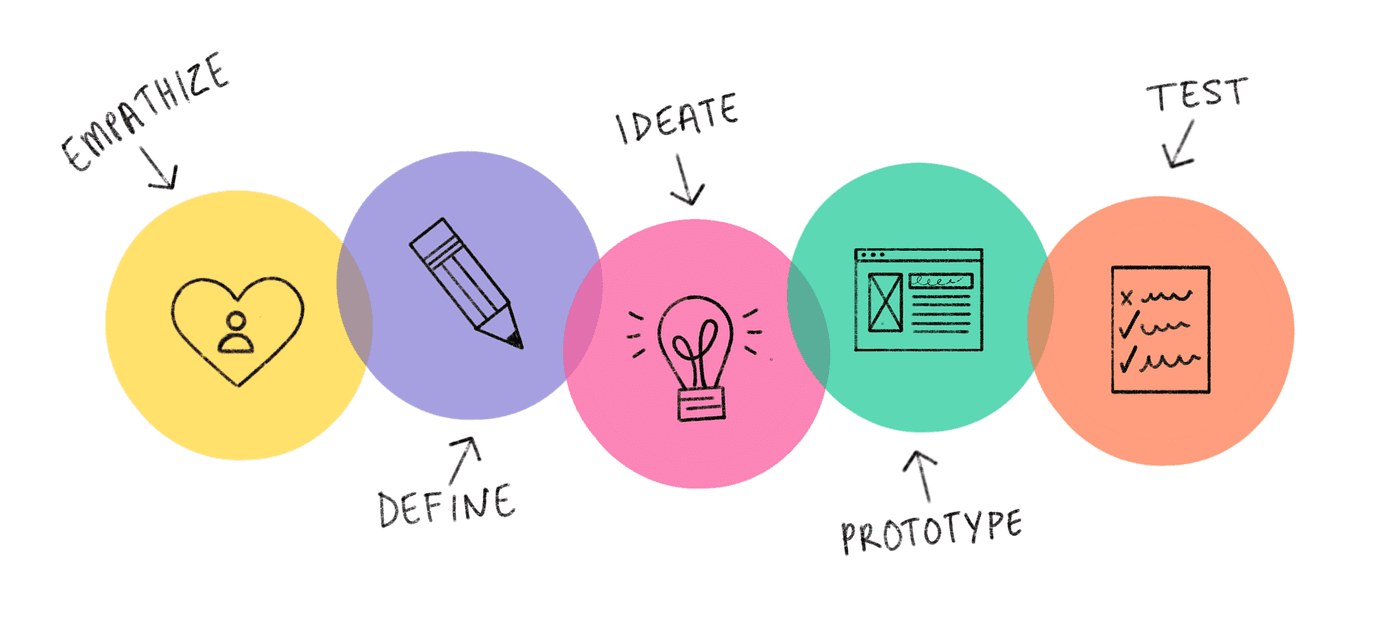
Process
This category details the step-by-step approach taken during the project.
Stage 1: Empathize
Conducted UX research to identify existing time and task managing challenges and user preferences. Research methods included user interviews, competitive analysis, and user personas.
Stage 2: Define
Clearly articulate the problem to be solved and the goals of the project.
Stage 3: Ideate
Generate ideas and solutions to address the identified problems and needs.
Stage 4: Prototype
Create wireframes and prototypes to visualize the solution and gather initial feedback.
Stage 5: Test
Evaluate the usability and effectiveness of the prototype with real users.
Research
We need to understand the daily needs, challenges, and behaviors of caregivers who manage the health and well-being of their clients.
Problem Statement
How might we design an app for caregivers with a centralized platform to streamline their responsibilities and ensure accurate, timely information is always accessible?
Research Objectives
Understand the needs and behaviors of caregivers by:
Explore the typical day-to-day activities and responsibilities of both professional and familial caregivers.
Identify key pain points and challenges they encounter in managing their clients' health information, medication schedules, and appointments.
Identify the tools, apps, and methods caregivers currently use to manage their clients’ care.
Determine the specific types of client information that caregivers need to access frequently.
Business Goals
Build a reliable, user-friendly tool that meets caregivers' needs.
User Interviews
Conducted interviews with a diverse group of participants, representing a mix of professional and familial caregivers with varying levels of experience.
Participants:
Age: Adults from 27 to 50 (27, 30, 38, 45, 50)
Experience: 2-20 years (2 years, 3 years, 5 years, 15 years, 20 years)
Experience Level: Professional Caregiver, Familial Caregiver, Geriatric Nurse, Part-time Caregiver, Pediatric Caregiver
Key Findings: Current Practices and Tools are
Primary Tasks: Daily living assistance, medication management, medical care, companionship, and therapy schedules.
Tools Used: Combination of paper records, basic apps, and electronic health record systems.
Pain Points: Current tools are effective but inefficient, with the manual effort required to keep everything updated.
User Interviews Insights
My caregiver task management app should include core features like task management, calendars with reminders, medication tracking, and document management.
User Goals
Minimizing the learning curve and allowing users to quickly perform their tasks without frustration.
A tool to keep and update sensitive medical information.
A centralized system for managing tasks and appointments.
Immediate access to critical information, especially in emergency situations.
Timely and accurate alerts are crucial for managing medication schedules, appointments, and daily care tasks.
Competitive Analysis
I conducted an in-depth analysis of 3 similar caregiver’s task management mobile app: Caring Village, Medisafe, Losata Helping Hands to compare their strength and weakness.
Key Findings:
All apps provide reminders, whether for medication, tasks, or appointments.
All apps prioritize ease of use, focusing on clear navigation and straightforward functionality.
Each app supports some form of communication, either through messaging, shared calendars, or community boards.

User Personas
Creating user personas helped to guide my ideation process, and they helped to highlight the goals and pain points of both professional and familial caregivers:
Key Findings:
Professional caregivers like Sarah prioritize efficient management of multiple clients’ schedules, accurate medical record-keeping, and seamless coordination with healthcare providers.
Familial caregivers like Mark need tools to balance caregiving with work, manage stress, and quickly access medical information during emergencies.
Pain Points:
Both personas struggle with tracking medical histories and medication schedules.
Sarah finds documentation time-consuming and coordination with providers challenging.
Mark faces emotional strain, difficulty managing evolving medical needs, and balancing his job with caregiving responsibilities.
Affinity Map
Key Findings:
Based on qualitative datas from the interviews, caregivers face significant challenges in managing their clients' medical information, to address these needs, the proposed caregiver management app will focus on:
tracking medication schedules
handling daily tasks and doctor appointments
documenting important medical information
Core Features:
Client profiles (health records, medical histories)
Medication tracker
Appointment management
Quick access to emergency information
Reminders and alerts for medication and appointments
Tools/Methods Used to Manage Tasks
Use spreadsheets to track medications.
Use shared online calendars for managing appointments and reminders.
Keep medical information and emergency contact details on their phones for quick access.
Caregivers often use a mix of paper and digital tools to manage their responsibilities.
Information/Task Management Challenges
In emergencies, important information like allergy details can be hard to find quickly.
A combination of paper and digital notes is used, but it’s inefficient.
Keeping everything updated is time-consuming, and there’s a constant worry about missing important changes.
A basic scheduling app is used, but it’s not ideal for managing all tasks.
Technical and Interface Design Goals
The app should have an easy-to-use and clean interface.
integrate all caregiving tasks and information in one centralized place.
A centralized location for quickly accessing client medical history and current medications would be highly beneficial.
Mobile access is essential for caregivers who are often on the go and need quick access to information.
Recommended Features
A tool that allows quick access to medical information, including health history, records, allergies, and emergency contacts.
A medication tracker to manage schedules and remind caregivers of medication times.
Comprehensive client profiles that include health records, medication history, and secure information storage.
Primary Management
manage medications schedules
manage schedules/doctor’s appointments.
monitor the condition of the person they care for.
document clients' health status.
Design
Create user flows, wireframes, and prototypes to visualize the solution and gather initial feedback from user testing.
User Flow
Users need to add a new medication to a client's active medication list.
Through this user flow, I am designing the adding new medication process. The process begins at the app's home screen, and it goes through different sections like adding a new item, searching for medication, reviewing medication details, entering the medication's schedule and dosage, selecting treatment duration, and it ends successfully adding medication to the client's active medication list with the correct reminders in place.
My design achieved the following:
Error Prevention: Warnings for duplicate medications or missed steps when adding a new medication.
Efficiency: Minimal steps and clear navigation to prevent confusion and reduce task time.

Lo-fi Wireframes
I created 8 lo-fi wireframes on the key features of the new app. Through these wireframes, I brainstormed and tested initial ideas, focusing on:
Dashboard
Client Management
Schedule Management
Medication Management
User Profile
Client Profile
Add a New Medication
Edit the New Medication
Brainstorming from the competitive analysis and user interviews:
Simple and high contrast layout.
Group related information into cards with rounded corners.
Use universally understood symbols for navigation and actions.
Highlight the most important tasks and actions first.
Only apply color to elements needing attention (e.g., notifications, active states).
Logo Design
Logo Description: A network of different sizes of nodes in a triangular arrangement, symbolizing the central hub and interconnected care elements.
Color Choice: Blue, pink, and green to convey health, love, and trust.
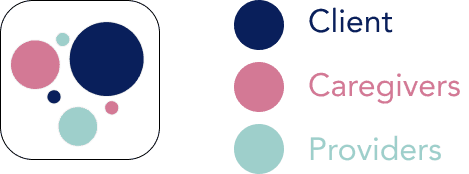
UI Kit - Iconography
UI kit - Selectors
UI kit - Cards
Hi-fi Wireframes
Key Features
Dashboard: Display an overview of upcoming tasks, medication reminders.
Centralized Client Profiles (Client Profile and Client Management): Provides a single location for storing and accessing detailed client information, including personal details, medical history, current medications, allergies, and emergency contacts.
Medication Management: Allows caregivers to schedule, track, and receive alerts for medication administration, including dosage and frequency.
Schedule: Enables caregivers to manage and track doctor appointments, including setting reminders and tracking appointment history.
Bottom navigation bar: Quick access to main features (Medications, Schedule, Clients, Dashboard).
Prominent “Add New” button: Quick access to adding tasks, appointments, or medications.
Usability Test
"It was frustrating to click through the numbers to select treatment duration." - Katherine
Goals
To test how well users can interact with CareHub and add a new medication to the client's active medication list.
Participants
5 participants, aged between 25 and 50.
2 professional caregivers and 3 family caregivers.
2 participants used a similar medication reminder app.
3 participants used a similar task management mobile app.
2 participants have never used a mobile app to manage client information, medication, appointments, and tasks.
Tech-Savviness: 3 participants are tech-savvy and 2 are less tech-savvy.
Task Flows
Task Flow 1: Navigate to the “Add a New Medication” section, and continue to search for the medication “Mupirocin”.
Task Flow 2: Search for the medication “Mupirocin” and continue to enter medication details for John Smith.
Task Flow 3: Follow the instructions, enter medication details (Schedule and Dosage; Set Reminders; Treatment Duration), and add the medication to John Smith’s active medication list.
Results
Success rate: 100%
Error Rate: Only 1 error per participant
Insights
None of the participants realized they have the option to scan the medication.
4 out of the 5 participants read the text while setting up a starting medication date.
4 out of the 5 participants were expected to select both dates (medication start and end dates) without going to a new screen.
Final Design - Add a Medication Feature
Conclusion
Challenges Faced
One of the challenges I faced was to create a simple and clean screen while fitting everything on a single screen. I learned to:
use dropdowns, date pickers, and pre-filled options to simplify data entry and minimize typing.
use font size, weight, and color to guide users’ attention to primary actions and important fields.
use clear icons with concise labels reduce text while maintaining clarity.
Takeaways
Through this project, I learned about usability testing during the high-fidelity wireframing iteration stage is invaluable for product designers as it:
validates design decisions, designers can see if their design choices meet user expectations and needs.
identify usability issues, confusing elements, and areas where users struggle, allowing designers to address these before final development.
